There are few who have seen more of Florida’s coastline than those who have completed the Florida Circumnavigational Saltwater Paddling Trail, commonly referred to as the CT. Stretching 1,515 miles long, the CT has been dubbed the longest designated national recreation trail in the United States and is considered by some to be a sea kayaker’s version of the Appalachian Trail.
Along the way, paddlers will pass by and through national parks, wildlife refuges, marine sanctuaries, aquatic preserves, state parks, local parks, preserves, small towns and big cities. To date, 40 paddlers have completed the journey. Most have been in their 20s, 60s or 70s. Some finish it in a matter of months, while others have taken more than a decade.
No matter which way you slice up the journey, it’s sure to be the adventure of a lifetime.
Experience the Florida Circumnavigational Saltwater Paddling Trail
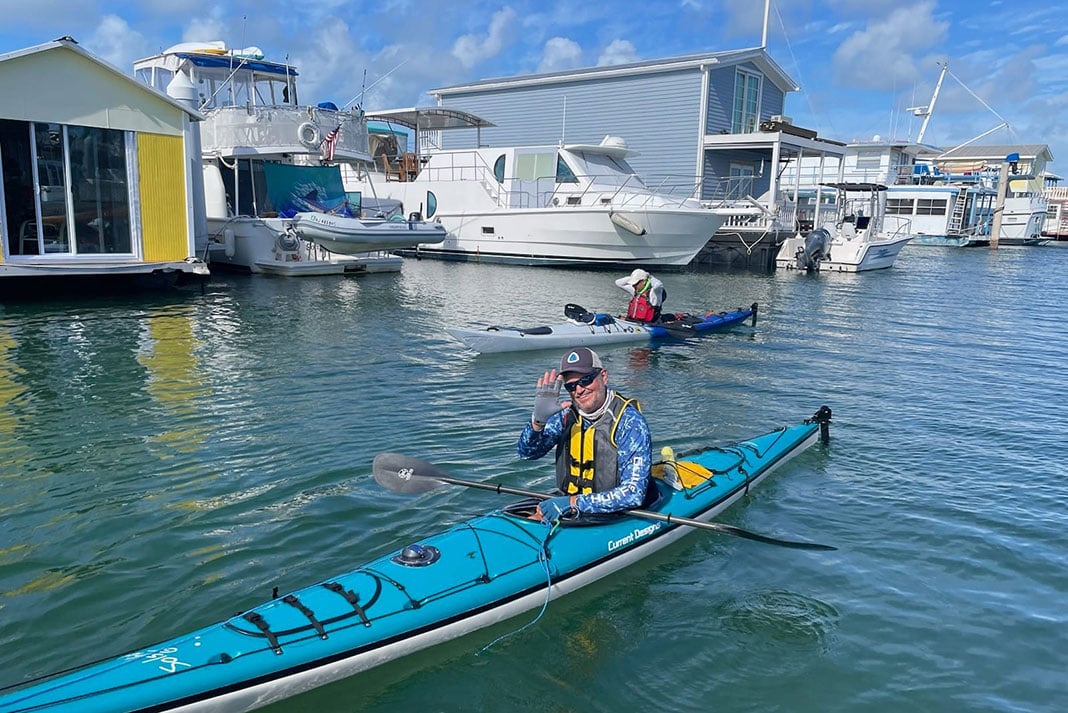
History of the CT
The idea for the Florida Circumnavigational Saltwater Paddling Trail was first brought up in the late 1980s after the establishment of the Maine Island Trail. However, development didn’t take place until the early 2000s.
Doug Alderson, Florida Department of Environmental Protection outdoor recreation specialist, was instrumental in bringing the CT to life. In what some would consider a dream job, he spent three years scouting and helping establish the trail, which stretches from Pensacola to Key West to the Georgia border.
After the work was complete, Alderson organized a statewide gathering in 2007 to form an independent nonprofit association to help maintain and improve the CT.
“I knew that for the trail to be successful, there had to be a group of volunteers to help maintain it because I was a staff of one,” says Alderson.
The Florida Paddling Trails Association (FPTA), now a steward of all Florida’s water trails, was created to support and maintain the CT. The organization utilizes trail keepers, a network of coastal trail angels, and maintains a guide for the trail that includes updated information on launches, campsites, campgrounds, points of interest and more. The FPTA also has an annual CT reunion where those thinking about taking it on can meet those who have already done so.
“It’s a small world and we’re here to support each other,” says Dorsey DeMaster, who was inspired to tackle the CT after attending a reunion. She became the first woman veteran to complete the trail in late 2021 and then served as president of the FPTA in 2022 and 2023.
“Network with the existing people who have already done it, or are in the process of doing it, and learn from their successes and things that didn’t go as well as planned.”
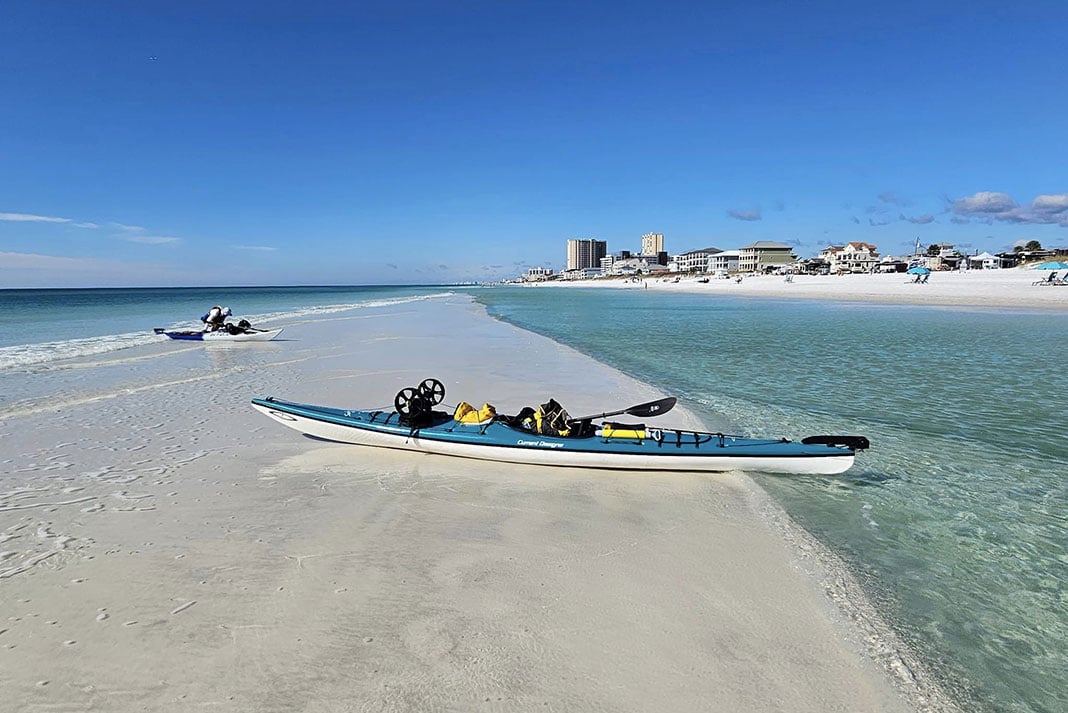
Completing the CT
While those with varying levels of experience have completed the CT, it’s most suited to long-distance sea kayakers who know how to navigate strong winds, currents, open water and boat channels. The recommended months to paddle are October through late April to avoid the majority of hurricane season.
Both the FPTA and Florida Department of Environmental Protection have resources on their websites for prospective and current paddlers. The map on this page lists launches, primitive campsites, campgrounds, other places to stay along the route, and important notices, such as closures due to hurricane damage. Some spots require a permit to stay while others do not.
The trail can be completed in two ways: Paddle it in one sweep or divide it up into sections. To date, 18 of the 40 sea kayakers who have completed the CT have chosen to do the latter.
“Section paddling is so much easier because you just have to connect the dots between all your paddles,” says Steve Cournoyer, who became the 29th person to finish the CT after completing the 26 segments of the trail over the course of 13 years.
Twenty-two people have chosen thru-paddling, including the most recent CT alum, Albert Ruggles, who had to sit out for 28 days due to weather. When he was able to hit the water, he sometimes packed in more than 30 miles a day in his Current Designs Solstice GT.
One his favorite parts of the trail was Florida’s Big Bend from the Aucilla River to Yankeetown because of the wildlife, fishing and camping. He was treated to countless manatee, dolphins, sea turtles and bird sightings on his travels around the state.
But, not every segment was so sweet. The wet winter amped up the mosquito activity in south Florida and made his trip through the Everglades memorable for the wrong reasons.
“It was beautiful all day long paddling and then once you got in your tent, you’d spend 15 minutes just killing all the mosquitos that came in with you,” he recalls. “God forbid you forgot anything outside.”
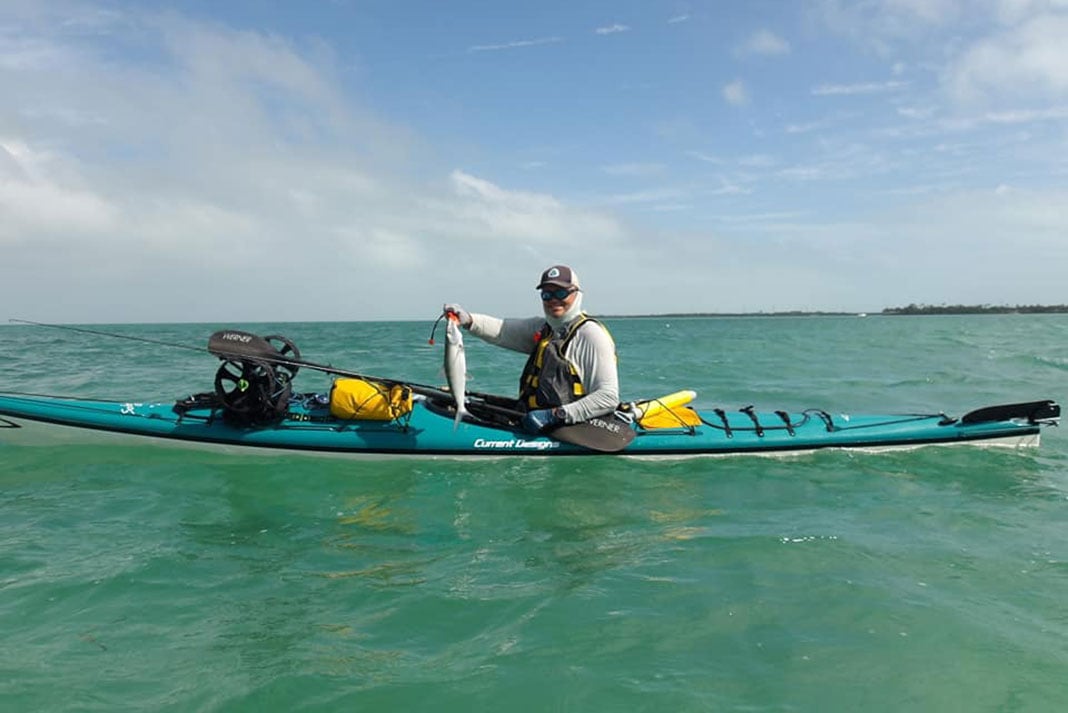
The stretch between Everglades City and the Florida Keys is also the longest stretch without an opportunity to resupply. Paddlers should have four to seven days’ worth of supplies on hand at any given time throughout the journey, according to the Florida Department of Environmental Protection. Some stops along the trail have supermarkets within walking distance, while others have post offices nearby where care packages can be sent. Water supplies can be replenished almost daily in the developed sections of the trail because of the many parks along the route.
While urban areas bring easier resupply opportunities, they often present challenges on the water. Some who have completed the CT, including Ruggles, cite the roughly 70-mile stretch between Miami and Lake Worth, nicknamed the “Concrete Canyon,” as one of the trail’s toughest sections. Certain areas are narrow and lined with seawalls, making it hazardous for kayakers who must navigate boat traffic and rebounding boat wakes. Because of this, some opt to complete the segment at night, but Ruggles’ timing put him in Miami on a weekend day.
“That was probably the most uncomfortable stretch of water for me because you just felt certain you were going in. I should not have gone through there when I did, but that’s just the way it worked out.”
However, the variation of scenery, coastal habitat, wildlife and degree of difficulty are part of the draw for those who choose to take on the journey.
“Every section has its challenges and I think that’s part of what attracts people to it,” says DeMaster.

What’s next for the CT
Word about the CT is spreading. DeMaster says more people from outside the state are purchasing the Florida Circumnavigational Saltwater Paddling Trail Guide. The ninth edition is set to come out this summer.
As of May 2024, there were 18 paddlers registered through the FPTA on the trail.
The nonprofit asks paddlers for information such as the make and model of their paddlecraft, whether there is a satellite tracker on board, what their experience level is, and if they will need assistance through the trail angel network.
If and when they finish, paddlers will be listed on the CT Hall of Fame on the FPTA website and have stories to share for a lifetime.
Alderson, who helped develop the trail, says he gets great joy hearing from those who have completed the CT.
“For a properly equipped and prepared person, if they really want to experience the Florida coast, this is the best way to do it.”
Feature photo: Albert Ruggles


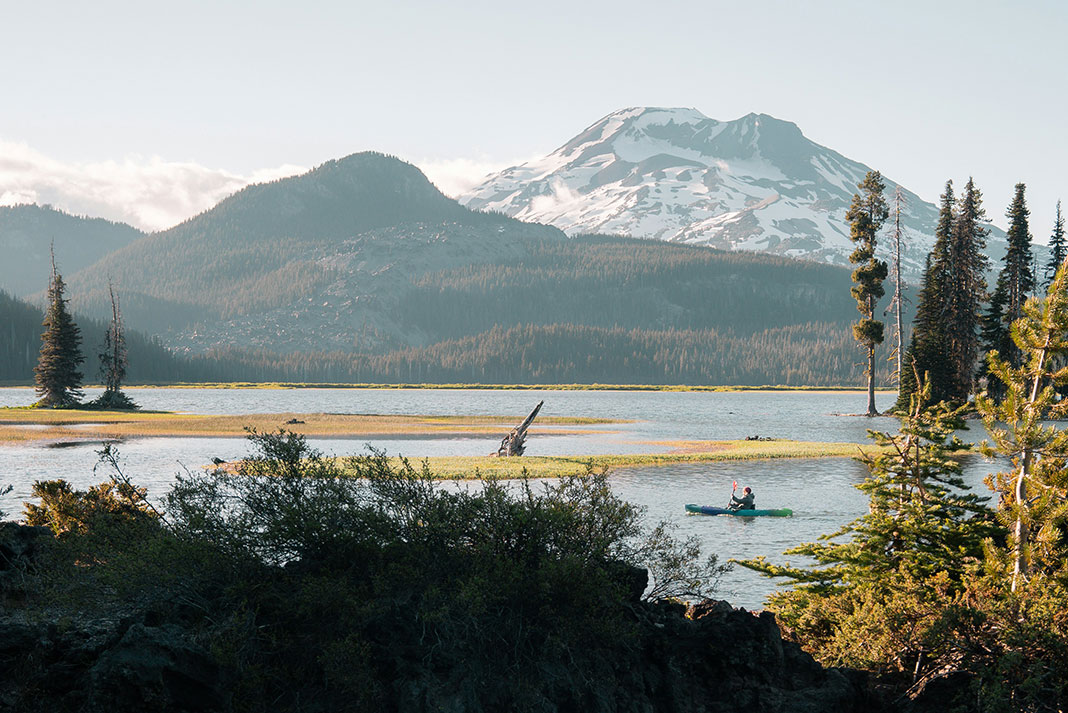
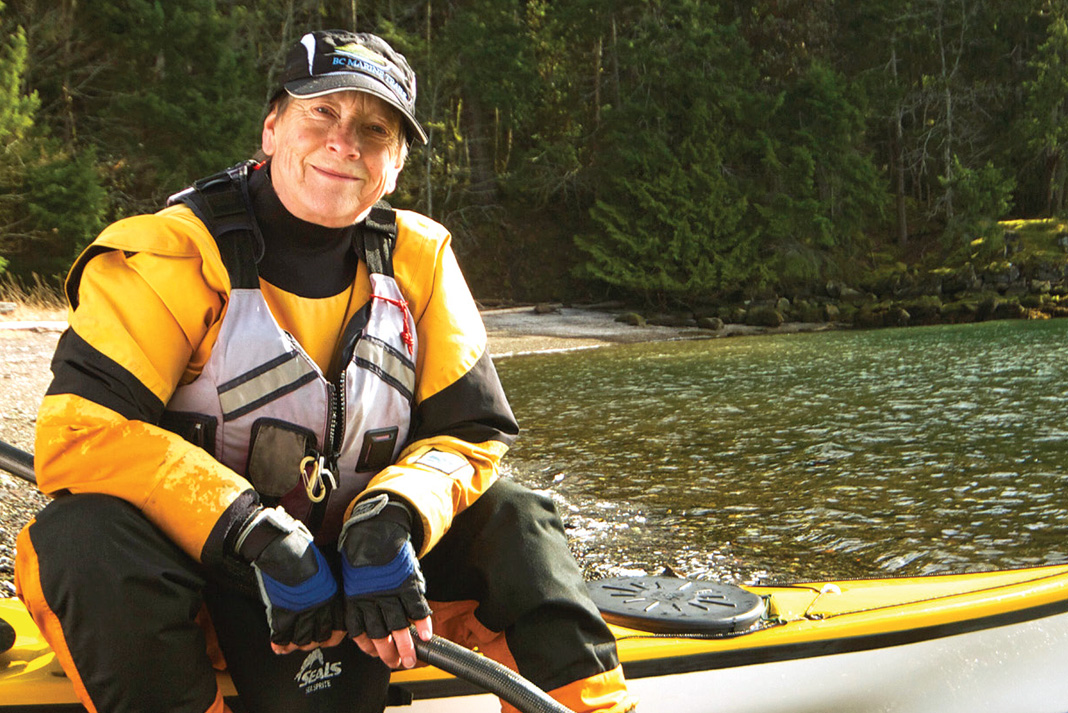
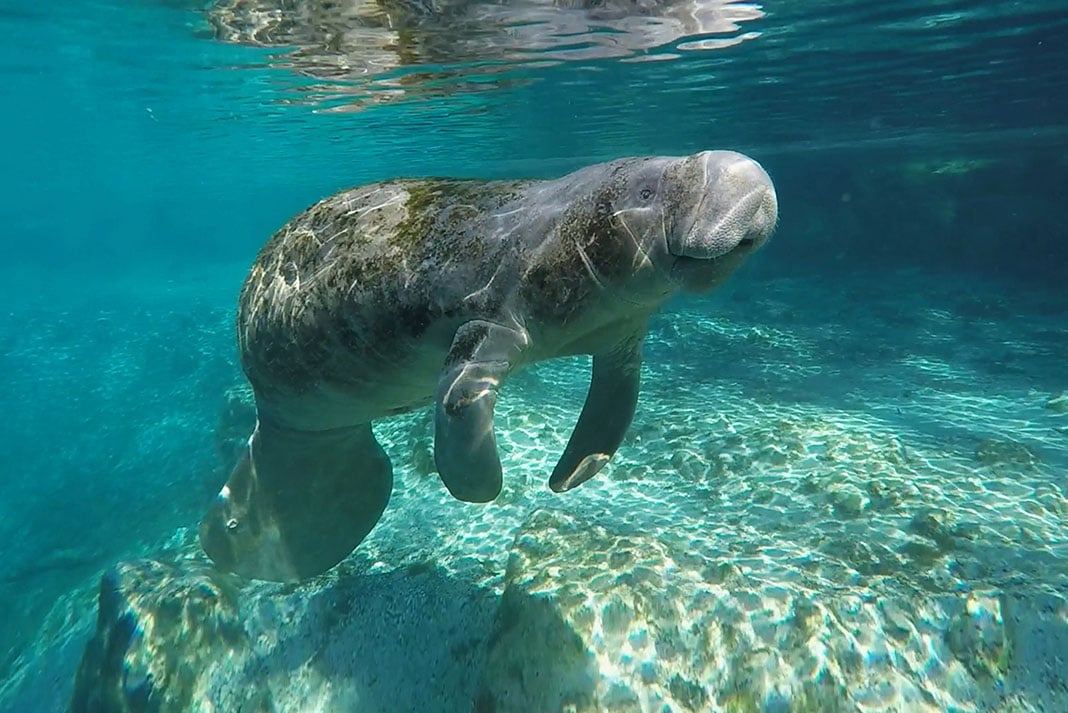
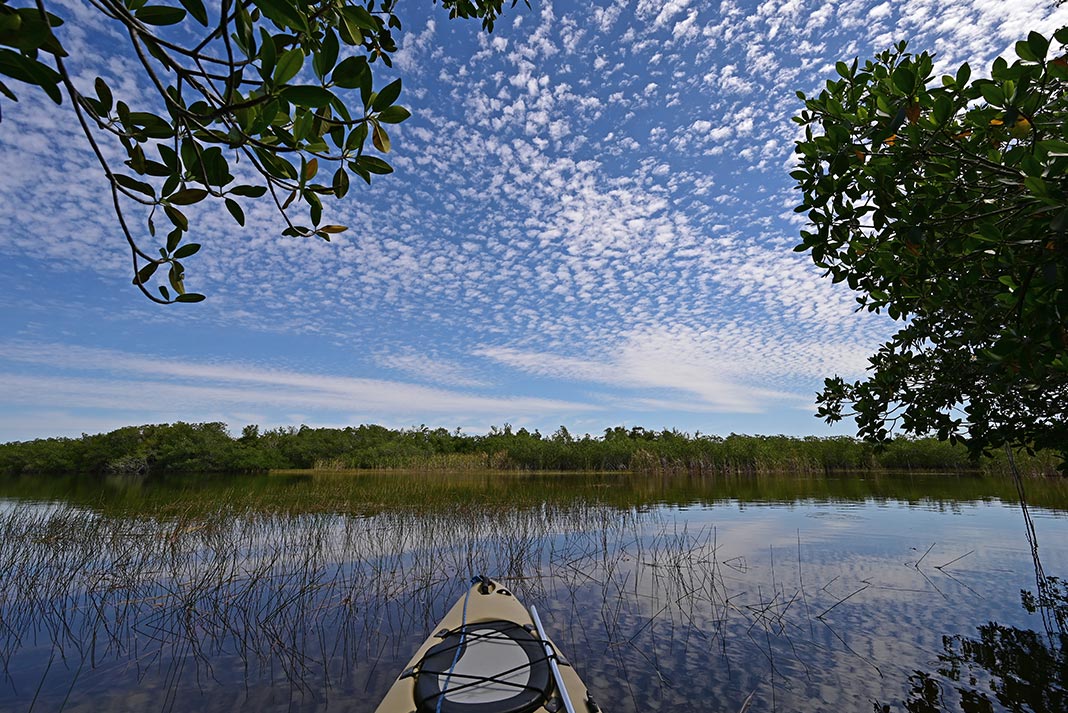
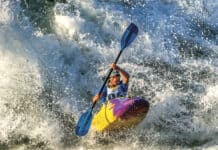
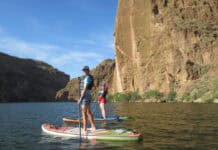
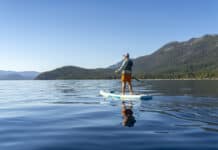
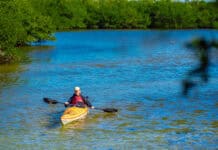
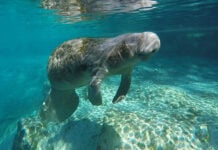


Somebody should come interview me . I have been on my journey for a few years now. I started in Montana and I have made it to Florida…. I’m going to go up the Atlantic coast after I get to the Florida keys